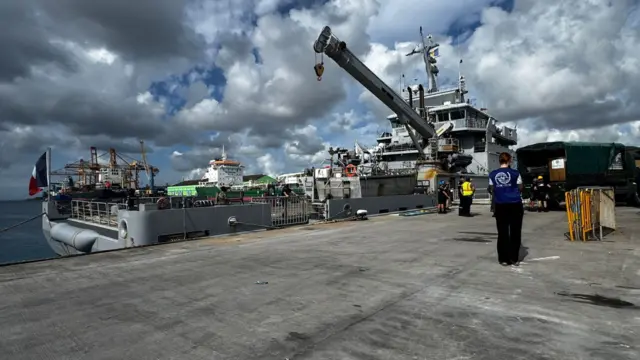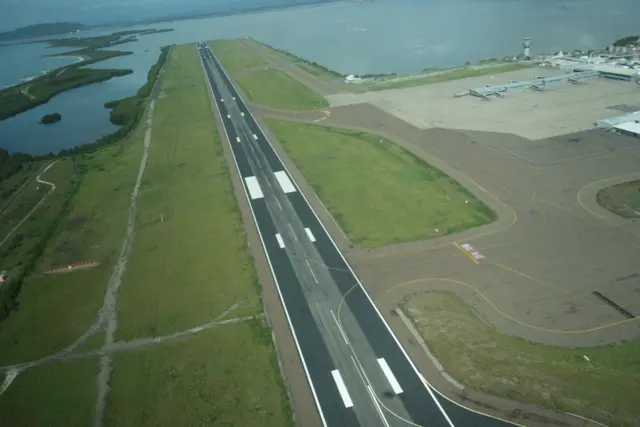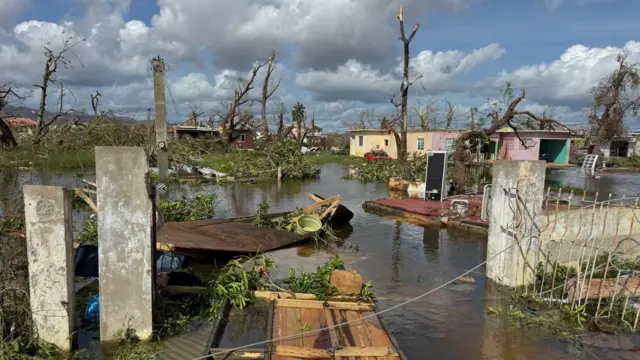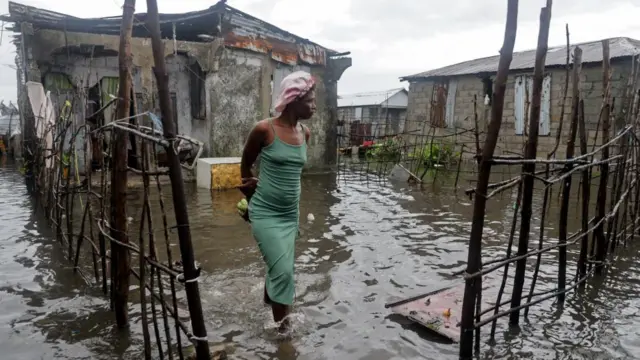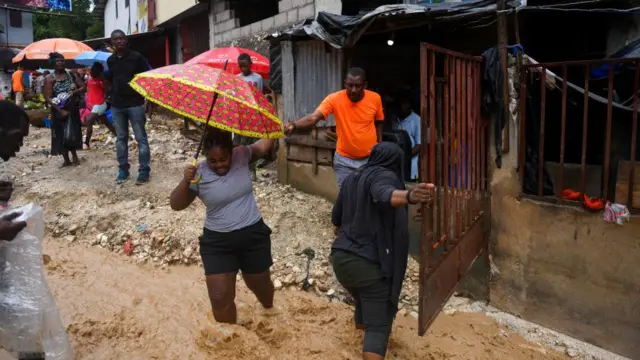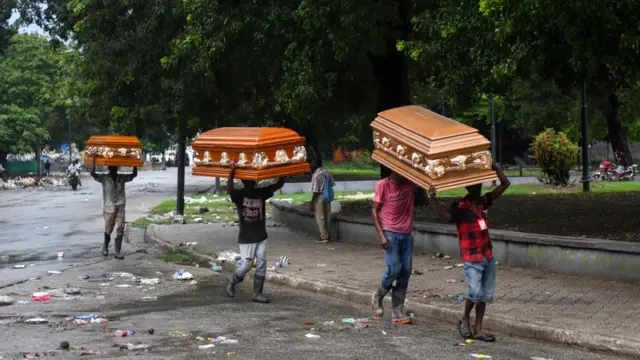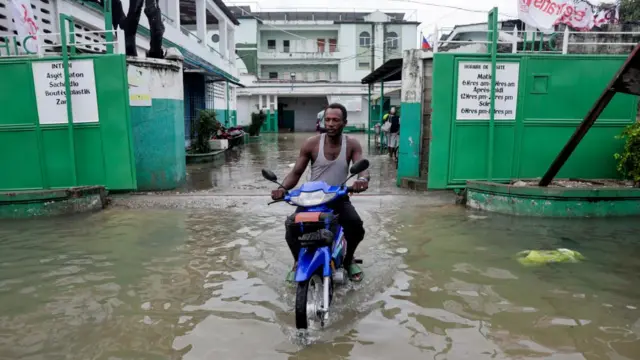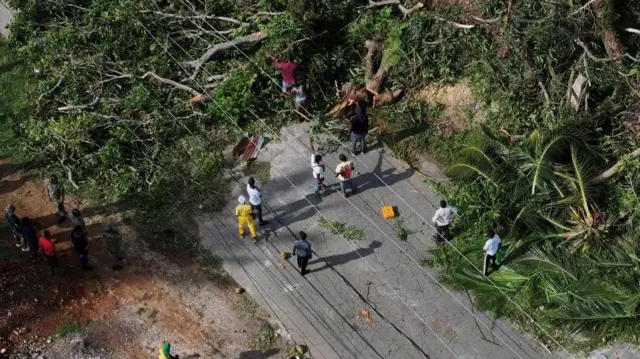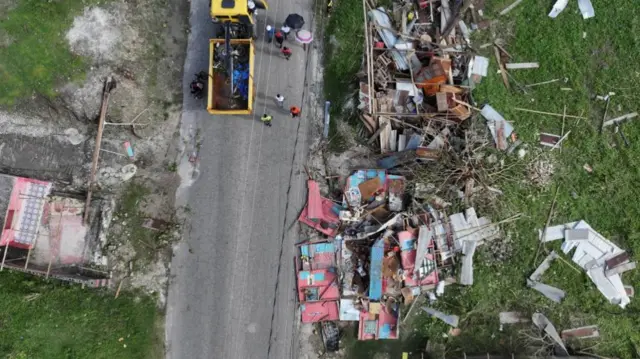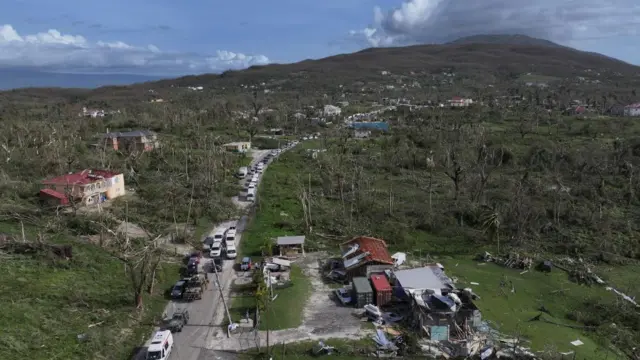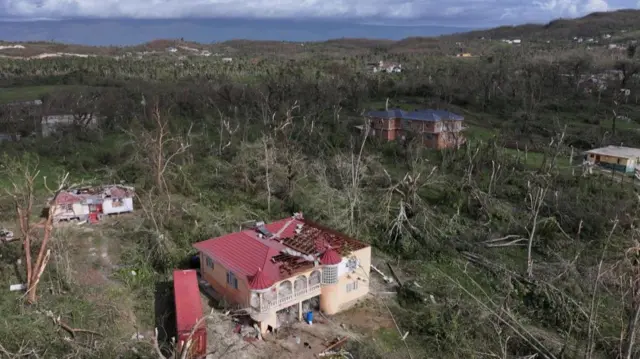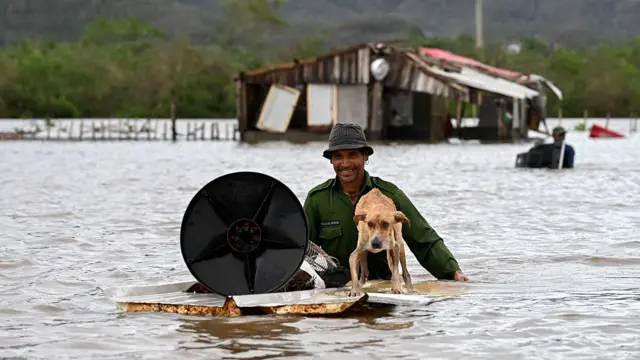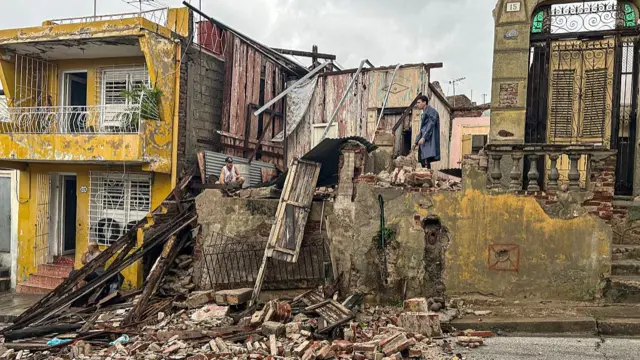Hurricane Melissa downgraded to category one as it crosses The Bahamaspublished at 00:46 GMT 30 October
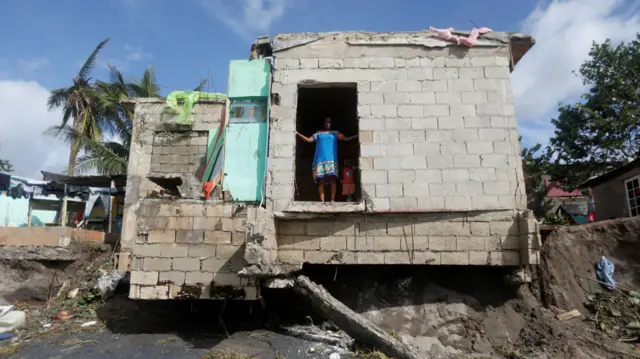 Image source, Reuters
Image source, ReutersHurricane Melissa has continued its devastating sweep across the Caribbean, destroying homes and infrastructure, flooding neighbourhoods and leaving dozens dead.
The impact in Jamaica was clearer on Wednesday, after the island nation was targeted squarely by the category five monster - one of the most powerful hurricanes ever measured in the region. At least four people have been confirmed dead there.
At least another 20 people died during flooding in Haiti as Melissa, now a category one storm, tore through the region. The storm is now crossing The Bahamas, with Bermuda next in line.
Jamaican Prime Minister Andrew Holness said the damage is "heartbreaking", and one town he toured had been "completely destroyed". But he added that the spirit of the population "remains unbroken".
We're closing our live coverage of the storm, but you can keep up to date through our news story.
